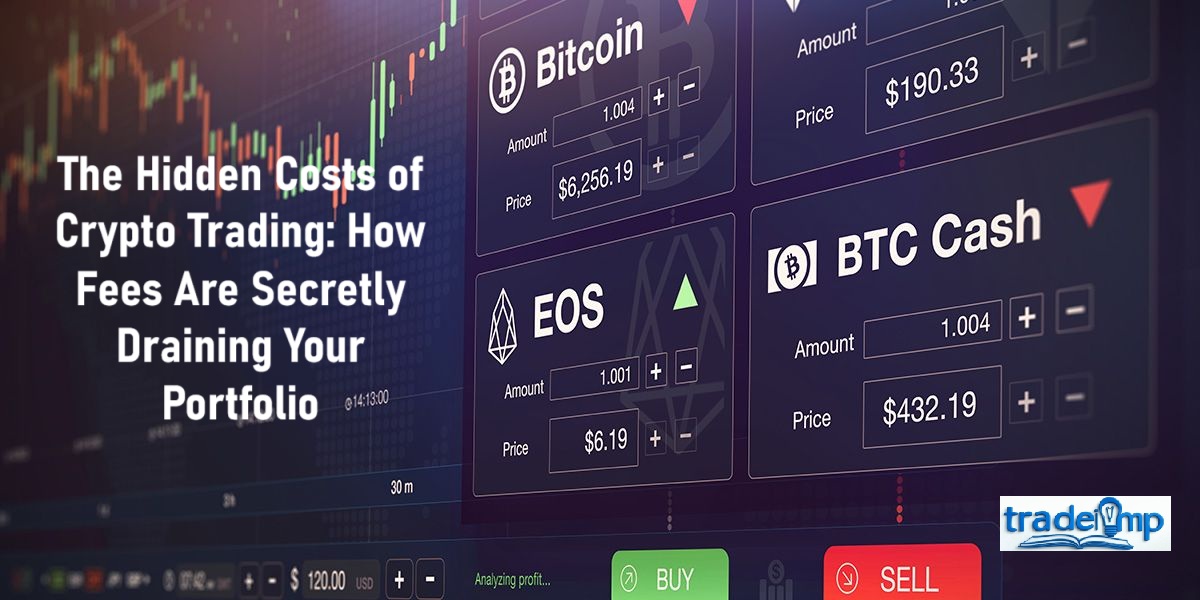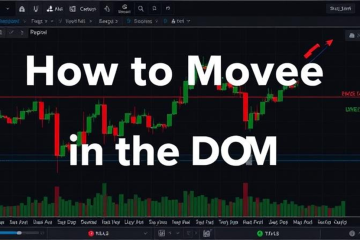Cryptocurrency trading has gained immense popularity in recent years, offering investors and traders opportunities to make significant profits. However, many traders are unaware of the hidden fees that can quietly eat away at their portfolio’s value. Unlike traditional stock trading, where fees and commissions are often more transparent, the crypto market can be riddled with obscure charges that significantly impact your returns. Hidden Costs of Crypto Trading
In this comprehensive guide, we will explore the different types of Hidden Costs of Crypto Trading, how they affect your profits, and strategies to minimize them.
Understanding Hidden Fees in Crypto Trading
Hidden fees in cryptocurrency trading refer to costs that are not clearly disclosed or are buried within the structure of transactions. While some fees are standard across trading platforms, others are subtle and difficult to detect, leading traders to underestimate their impact.
1. Trading Fees
Trading fees are the most obvious costs associated with cryptocurrency exchanges. However, within this category, there are various hidden costs, such as:
a. Maker and Taker Fees
Most crypto exchanges operate on a maker-taker fee model:
- Maker Fees: Charged when you place a limit order that adds liquidity to the order book.
- Taker Fees: Charged when you place a market order that removes liquidity from the order book.
These fees may seem small at first glance (typically ranging from 0.1% to 0.5%), but they accumulate over multiple trades, significantly reducing profits.
b. Spread Fees
The spread is the difference between the buying and selling price of a cryptocurrency. Some exchanges inflate this spread to increase their profit margins, effectively charging users an additional, often unnoticed, fee.
2. Deposit and Withdrawal Fees
a. Cryptocurrency Withdrawal Fees
Most exchanges charge a fee for withdrawing crypto assets to external wallets. These fees vary based on network congestion, but some platforms set artificially high withdrawal fees to increase revenue.
b. Fiat Deposit and Withdrawal Fees
If you fund your crypto trading account using fiat currency, you might encounter hidden fees in the form of:
- Bank transfer fees
- Credit card transaction fees (often ranging from 2% to 5%)
- Wire transfer fees
Some exchanges partner with third-party payment providers that charge extra for deposits and withdrawals, further increasing trading costs.
3. Slippage Costs
Slippage occurs when the final execution price of a trade differs from the expected price due to market fluctuations. High volatility in crypto markets makes slippage a significant hidden cost, especially for large trades.
4. Margin Trading and Liquidation Fees
Many traders engage in margin trading, borrowing funds to increase their trading position. However, margin trading comes with:
- Interest fees on borrowed funds
- Liquidation fees if your position is forcibly closed due to insufficient collateral
These hidden costs can add up quickly, particularly in highly volatile markets.
5. Network and Gas Fees
Network fees (commonly known as gas fees in Ethereum transactions) can be unpredictable and costly. When transacting on networks like Ethereum, Binance Smart Chain, or Solana, traders often overlook how these fees impact their total transaction cost.
6. Hidden Costs in Staking and Yield Farming
While staking and yield farming offer lucrative rewards, there are hidden fees associated with:
- Lock-up periods (preventing access to funds for a specific duration)
- Unstaking fees (charged when withdrawing staked assets prematurely)
- Protocol fees (decentralized platforms may deduct a percentage of rewards as a fee)
7. Inactivity Fees
Some exchanges impose inactivity fees on accounts that remain dormant for extended periods. These fees can quietly drain your balance if left unchecked.
How Hidden Fees Impact Your Portfolio
Hidden fees, although seemingly small, can significantly erode a trader’s profit over time. Let’s look at how these fees affect your portfolio:
1. Reduction in Net Profits
If you are actively trading, fees accumulate with every transaction. Over time, even small fees can reduce net gains by a substantial percentage.
2. Hindrance to Compounding Returns
For long-term investors, hidden fees reduce the reinvestable amount, limiting the compounding effect of gains and hindering overall portfolio growth.
3. Increased Breakeven Point
Traders need to make higher profits to compensate for fees. This makes it harder to achieve profitability, especially for day traders making frequent transactions.
Strategies to Minimize Hidden Fees in Crypto Trading
To protect your portfolio from hidden fees, consider these strategies: Cardano (ADA) Price
1. Choose the Right Exchange
- Compare fee structures across multiple exchanges.
- Opt for platforms that offer competitive fees and transparent pricing.
- Use decentralized exchanges (DEXs) for certain transactions to avoid centralized exchange fees.
2. Utilize Limit Orders Instead of Market Orders
Limit orders can help avoid high taker fees and reduce slippage costs.
3. Consolidate Withdrawals
Rather than making frequent small withdrawals, consolidate funds into a single transaction to save on withdrawal fees.
4. Monitor Gas Fees
Use tools like Etherscan or GasNow to track Ethereum gas fees and conduct transactions when fees are lower.
5. Take Advantage of Exchange Discounts
Some exchanges offer reduced fees for:
- Holding native exchange tokens (e.g., Binance’s BNB token)
- High-volume traders with VIP status
- Using bank transfers instead of credit cards for fiat deposits
6. Use Low-Fee Blockchains
Consider transacting on blockchains with lower fees, such as:
- Binance Smart Chain (BSC)
- Solana (SOL)
- Avalanche (AVAX)
7. Be Mindful of Staking and Yield Farming Fees
Research the total cost of staking or yield farming, including unstacking fees and potential lock-up periods, before committing funds.
8. Avoid Unnecessary Margin Trading
Margin trading fees can accumulate quickly. Use it cautiously and be aware of interest charges and liquidation risks.
9. Check Terms and Conditions Regularly
Crypto exchanges occasionally update their fee structures. Stay informed by reviewing their fee schedules periodically.
Conclusion
Hidden fees in crypto trading are a major concern that can silently drain your portfolio’s value. Whether you are a beginner or an experienced trader, understanding and managing these fees is crucial for maximizing your returns.
By selecting the right exchange, monitoring fee structures, and employing cost-saving strategies, you can reduce unnecessary expenses and improve your overall profitability in the cryptocurrency market. Stay informed, trade smartly, and always keep an eye on the fine print to protect your investments from hidden costs.




